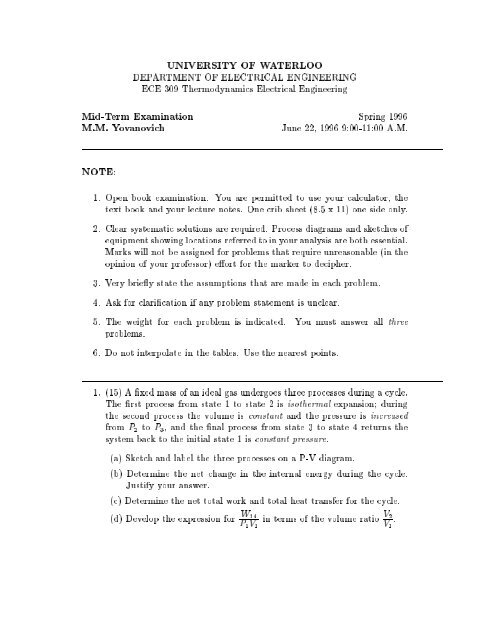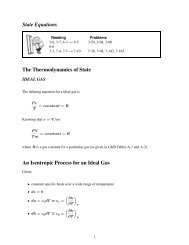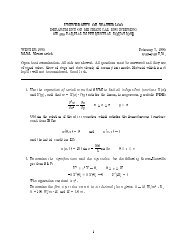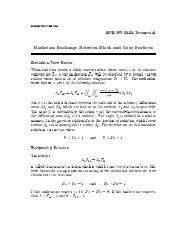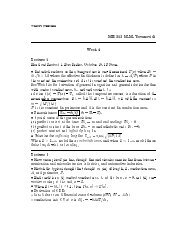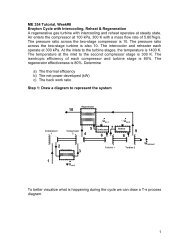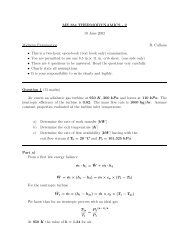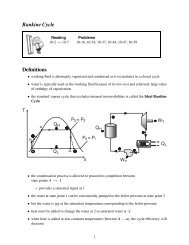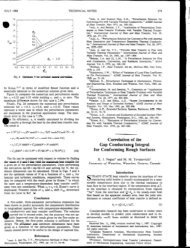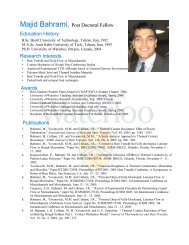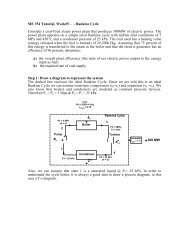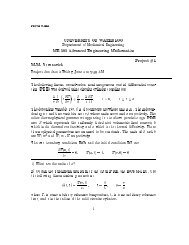UNIVERSITY OF WATERLOO Mid-Term Examination M.M. ...
UNIVERSITY OF WATERLOO Mid-Term Examination M.M. ...
UNIVERSITY OF WATERLOO Mid-Term Examination M.M. ...
- No tags were found...
You also want an ePaper? Increase the reach of your titles
YUMPU automatically turns print PDFs into web optimized ePapers that Google loves.
<strong>UNIVERSITY</strong> <strong>OF</strong> <strong>WATERLOO</strong>DEPARTMENT <strong>OF</strong> ELECTRICAL ENGINEERINGECE 309 Thermodynamics Electrical Engineering<strong>Mid</strong>-<strong>Term</strong> <strong>Examination</strong> Spring 1996M.M. YovanovichJune 22, 1996 9:00-11:00 A.M.NOTE:1. Open book examination. You are permitted to use your calculator, thetext book and your lecture notes. One crib sheet (8.5 x 11) one side only.2. Clear systematic solutions are required. Process diagrams and sketches ofequipment showing locations referred to in your analysis are both essential.Marks will not be assigned for problems that require unreasonable (in theopinion of your professor) eort for the marker to decipher.3. Very briey state the assumptions that are made in each problem.4. Ask for clarication if any problem statement is unclear.5. The weight for each problem is indicated. You must answer all threeproblems.6. Do not interpolate in the tables. Use the nearest points.1. (15) A xed mass of an ideal gas undergoes three processes during a cycle.The rst process from state 1 to state 2 is isothermal expansion; duringthe second process the volume is constant and the pressure is increasedfrom P 2 to P 3 , and the nal process from state 3 to state 4 returns thesystem back to the initial state 1 is constant pressure.(a) Sketch and label the three processes on a P-V diagram.(b) Determine the net change in the internal energy during the cycle.Justify your answer.(c) Determine the net total work and total heat transfer for the cycle.(d) Develop the expression for W 14P 1 V 1in terms of the volume ratio V 2V 1.
2. (25) A free piston-cylinder system contains 5 kilograms of saturated liquid(water) at 100 C which undergoes an isobaric/isothermal process until allthe liquid evaporates. The saturated vapor (steam) is next heated underconstant pressure until its temperature is 350 C (this is process 2-3).During the 3-4 process, the superheated steam is cooled under constantvolume until all the steam is now saturated vapor at some new temperatureand pressure. The nal process (process 4-5) is isobaric/isothermal duringwhich the steam is cooled until the specic volume of the liquid/vapormixture is equal to the specic volume of the saturated vapor at state 2,i.e., v 5 = v 2 .a) Sketch and label the four processes and the ve end states on a T-vdiagram.b) Determine from the attached tables of water/steam properties, thequality and the total enthalpy of the mixture at the end state.3. (30) Two simple substances A and B occupy separate compartments of acylindrical tank whose total volume is V . The initial total volumes of thetwo substances are V A1 and V A2 such that V A1 = V=3 and V A2 =2V=3. Thetwo compartments are separated by a frictionless movable piston as shownin the gure below. The entire tank is insulated from the its surroundings.Initially the substance A is saturated vapor at temperature T A1 and pressureP A1 , and substance B is a gas whose temperature is T B1
4. (30) Tank A as shown below hasavolume of 0.4 m 3 and contains argongas at 250 kPa, 30 C. Cylinder B contains a frictionless piston of a masssuch that a pressure of 150 kPa inside the cylinder is required to raisethe piston. The valve connecting the two isnow opened, allowing gas toow into the cylinder. Eventually, the argon reaches a uniform state of150 kPa, 40 C throughout. Calculate the work and heat transfer to theargon during this process (Treat argon as an ideal gas with R =0:20813,c p =0:5203, and c v =0:3122. All in kJ=kg K).Some Equations and Relationships1. E 1 + W 1!2 + Q 1!2 = E 22. e = u + 1 V 2 + gz + 23. h u + Pv u = U Mv = V M4. v =(1, x)v f + xv g v fg = v g , v f5.6.dEdtdMdt!!CVCV7. c v @u@TX = Q _ + W _ + (e + Pv) M _ ,Xin= _M ,XM _in out!Vc p @h@T!PXout(e + Pv) _ Mc p = c v + R3


